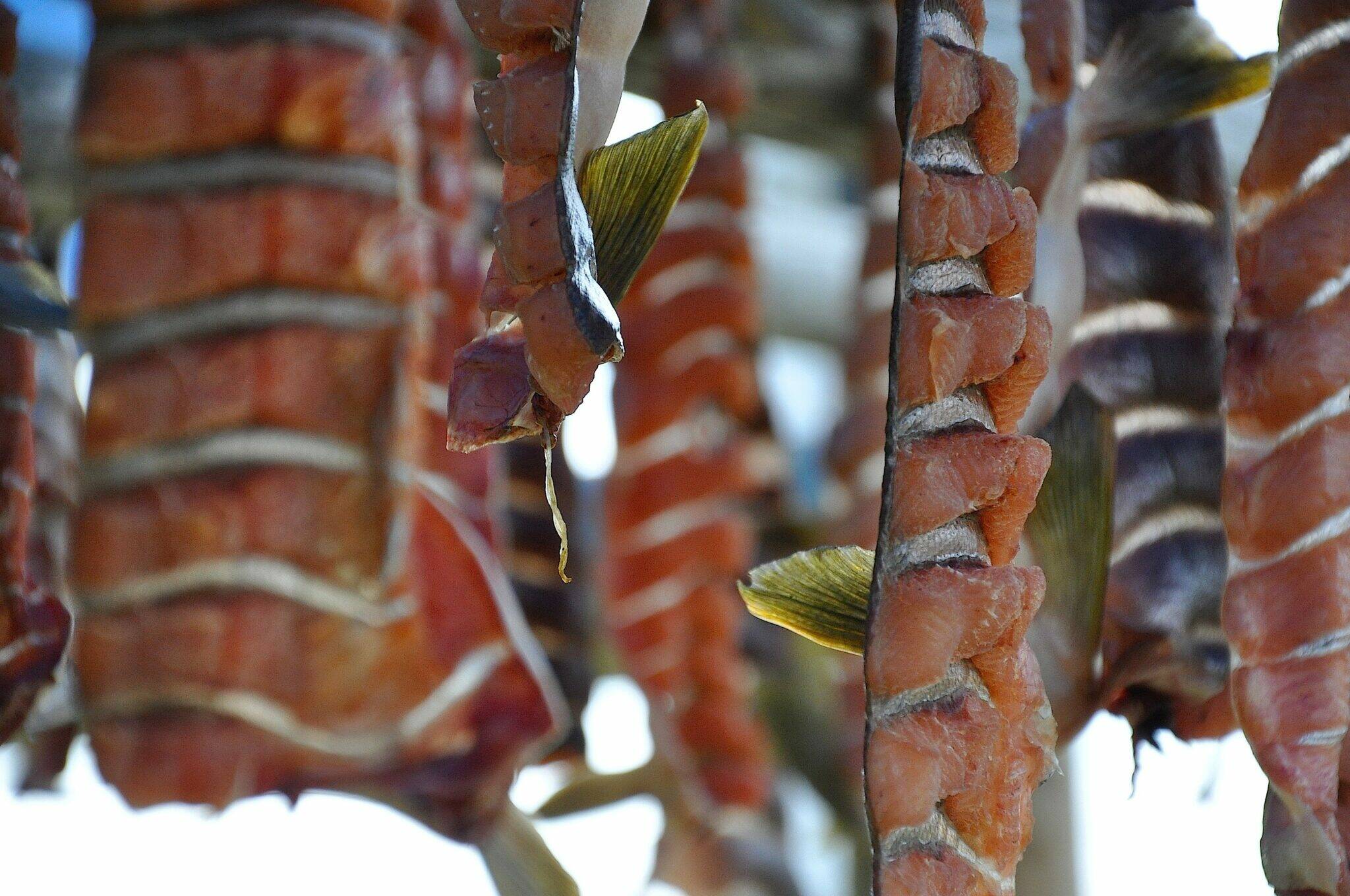Salmon runs on the Yukon River continued to be anemic this year, federal and state agencies reported, and there are far too few fish reaching Canada to meet goals set in a treaty between that nation and the United States.
The ongoing fall chum salmon run is the fifth lowest on record for the nearly 2,000-mile river, and the coho run has turned out to be the second lowest on record, the Alaska Department of Fish and Game reported on Tuesday.
There are enough fall chum salmon to allow subsistence fishing in one upriver area, the department reported: the Teedriinjik River, also known as the Chandalar River, a Yukon tributary. A subsistence harvest opened there in mid-September.
However, all other areas of the upper Yukon River basin, whether in Alaska or Canada, remain completely closed to chum or coho salmon fishing, the department said.
The Yukon River’s fall chum run followed a summer run that, though low, was substantially better than those of the past two years, according to a report issued jointly by the state Department of Fish and Game and the U.S. Fish and Wildlife Service.
The summer chum run, as measured by sonar at Pilot Station near the Yukon River’s mouth, was about 846,000 fish, within the range of the preseason forecast and within the goals for “escapement,” the term used to describe salmon returns to spawning grounds, said the report, issued Sept. 30. It was enough to allow for some subsistence harvest in Alaska this summer, and it was a marked improvement from the record-low 153,497 summer chum salmon counted at Pilot Station in 2021 and nearly twice the 463,806 summer chum counted there in 2022.
Chum salmon, one of Alaska’s five salmon species, return to spawning rivers in two general pulses categoried as summer and fall runs.
Unlike chum, Chinook salmon failed to show significant improvement this year in the Yukon River, according to the joint state-federal report.
Only 58,500 Chinook salmon were counted by sonar passing through the river at Pilot Station, just above last year’s record-low count of 48,439 Chinook according to the joint state-federal report. That is only about a third of the recent 10-year average for Yukon River Chinook.
Of those Chinook swimming through the river, only about 15,300 Canada-origin fish made it through the sonar station at Eagle, near the Canadian border, the report said. That is only about a third of the escapement goal, the report said.
As has been the case in past years, Chinook and chum returns failed to meet targets under the U.S.-Canada Yukon River Salmon Agreement, an annex to the Pacific Salmon Treaty.
There are several potential causes of the Yukon River salmon problems, according to biologists.
Chum returns, both in summer and fall, were about normal until recently, said Christy Gleason, a Fish and Game area biologist for the Yukon River region.
“Then in 2020, something happened in the North Pacific and all the stocks on the Yukon River crashed,” Gleason said.
Along with ocean problems, there seem to be changes in the upriver spawning areas that are particularly harmful to fish originating in Canada, she said. “The last couple of years, we’ve seen poor run strength of the Canadian stocks,” she said.
She pointed to an incident in 2016 in which rapid retreat of a Yukon Territory glacier abruptly changed the course of a river. That incident, which scientists refer to as a case of “river piracy,” has caused some of the sloughs where chum salmon typically spawn to run dry, she said.
For Chinook, there are concerns that a parasitic disease is killing fish before they reach their upriver spawning locations. Government agencies and other entities have been investigating the level of infections caused by the parasite Ichthyophonus. Salmon acquire the parasite from prey eaten in the ocean, and severity of infections during river migrations increases with higher water temperatures, according to the Department of Fish and Game.
There are also concerns that too many Yukon River salmon are being intercepted at sea by large fishing vessels harvesting pollock and other species. That interception is known as bycatch. At its just-concluded October meeting, the federal North Pacific Fishery Management Council approved an analysis of potential rule changes aimed at limited chum salmon bycatch in the Bering Sea pollock harvests.
• Yereth Rosen came to Alaska in 1987 to work for the Anchorage Times. She has reported for Reuters, for the Alaska Dispatch News, for Arctic Today and for other organizations. She covers environmental issues, energy, climate change, natural resources, economic and business news, health, science and Arctic concerns. This story originally appeared at alaskabeacon.com. Alaska Beacon, an affiliate of States Newsroom, is an independent, nonpartisan news organization focused on connecting Alaskans to their state government.

